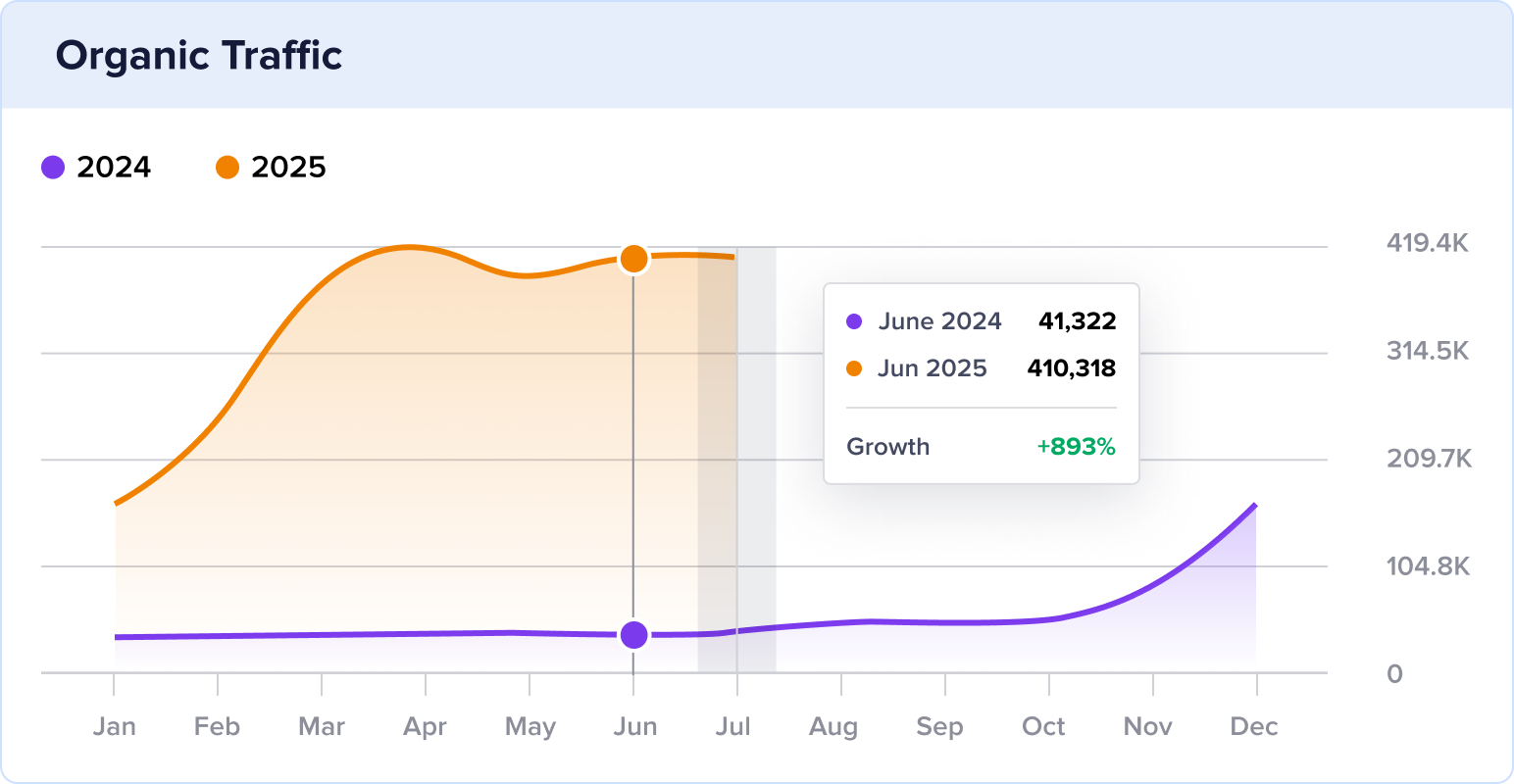How a Photo Framing Site Grew Organic Traffic by 595% YoY
https://frameology.com/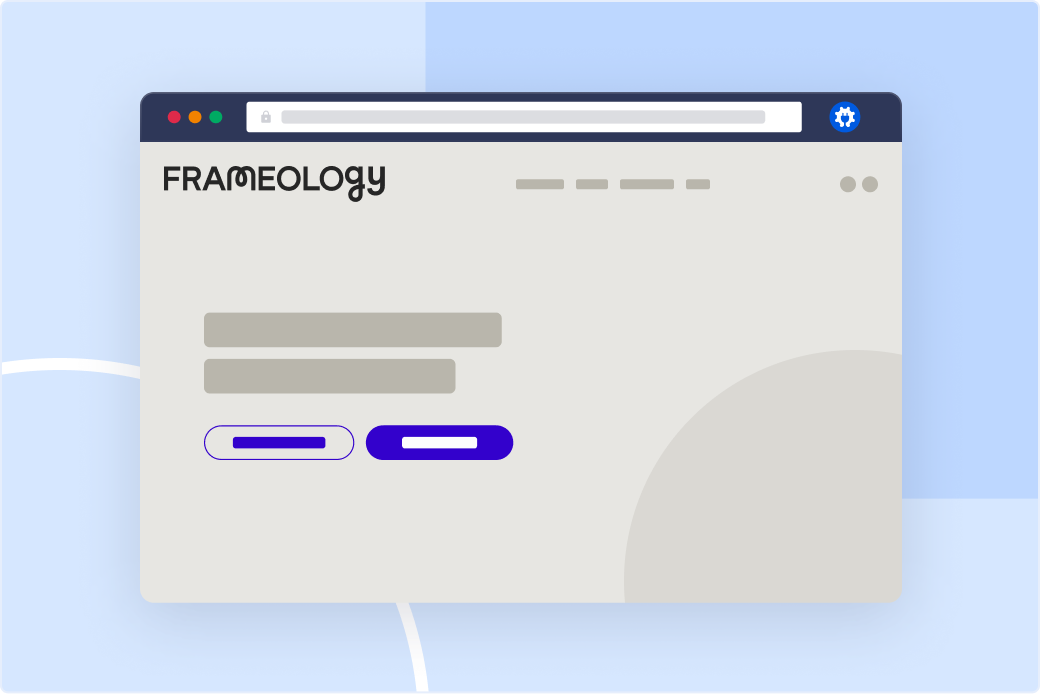
Stats
16.6K to 115.7K Monthly Visits
Industry
Ecommerce & Retail
Niche
Photography
Reporting Date
February 2024
Frameology is an eCommerce platform that offers photo printing and framing services.
Although the domain has been active since 2015, February 2024 brought unprecedented traffic growth. Monthly organic visits skyrocketed from 6.6K to over 115K in just one year.

Join us as we reveal the strategies behind Frameology's incredible growth and share tips for replicating their wins on your website.
In This Article
The Catalyst: How Frameology Reached 115.7K Monthly Visits
1. Product Schema Activates Review Snippets on the SERP
In February 2024, Frameology’s review snippets went from practically non-existent to 4.5K keyword rankings.

Review snippets are enhanced listings that show customer ratings and reviews directly on the SERP.
Here’s what they look like in search results:
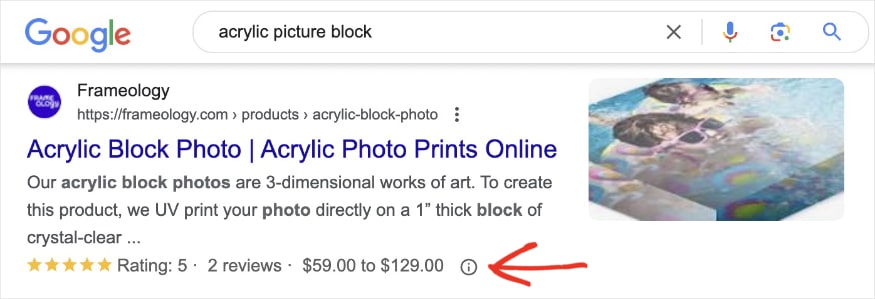
In addition to two 5-star ratings, the above search result also shows the price range for this product.
As for how Frameology got these elements to show on the SERP, that’s the power of product schema markup.
Schema markup is a type of specialized code that lives on the back end of your website. It communicates important details about your page to search engines.
There are several types of schema markup, each with their own attributes.
Product schema allows you to share essential product details like pricing, stock availability, and shipping information. You can also set product ratings and reviews, like Frameology did, using product review schema.
Overall, implementing schema markup is one of the best ways to get rich results on the SERP. And while it’s not guaranteed, it is an SEO best practice to include it.
Why this matters:
According to SEO statistics, rich results get 58% of all clicks.
Review snippets are particularly powerful for eCommerce businesses for the following reasons:
- Increased Trust and Credibility: Review snippets provide valuable social proof to potential customers. Seeing positive ratings and reviews on the SERP builds trust and credibility in your product, leading to higher clickthrough rates and conversions.
- Competitive Edge: By including product details in your schema markup, you can win more real estate on the SERP. Taking up more space in search results is a great way to catch users' attention and increase the likelihood of them choosing your website.
- Enhanced Visibility: Review snippets can dramatically improve your visibility and boost brand awareness. They stand out in search results, encouraging users to notice and engage with your brand.
How to get product review snippets:
This step-by-step tutorial shows WordPress users how to add schema markup without a plugin. It uses JSON-LD and requires basic coding knowledge.
As for getting the code, we recommend either of these helpful tools:
You’ll need to select Product for each tool to generate the appropriate schema markup.
Tools for product review schema:
Want to skip the code and take the easy route to review snippets?
A product reviews plugin does the work for you, so you can focus on what you do best: running a business and creating great content.
All in One SEO (AIOESO) helps you implement product schema in just a few clicks. Simply navigate to the Schema Generator in the WordPress editor and select Product from the catalog.
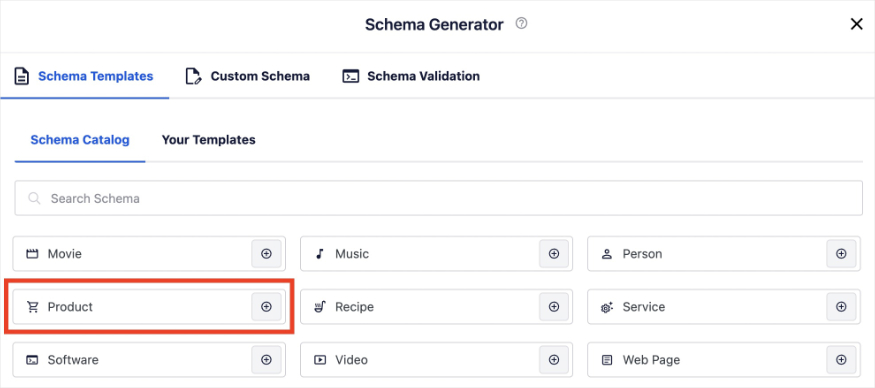
You can enter your product details in a few user-friendly fields and add reviews.
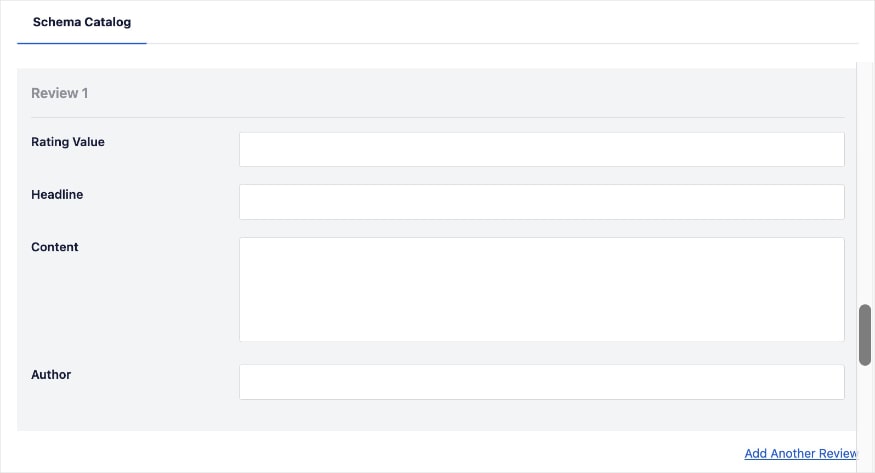
AIOSEO will then format and implement the structured data on your site. It really is that easy.
Now, let’s look at how one piece of Frameology’s content is dominating a prominent area of the SERP: featured snippets.
2. The Content King of Featured Snippets
When analyzing frameology.com, we noticed that featured snippets more than doubled in less than a year.
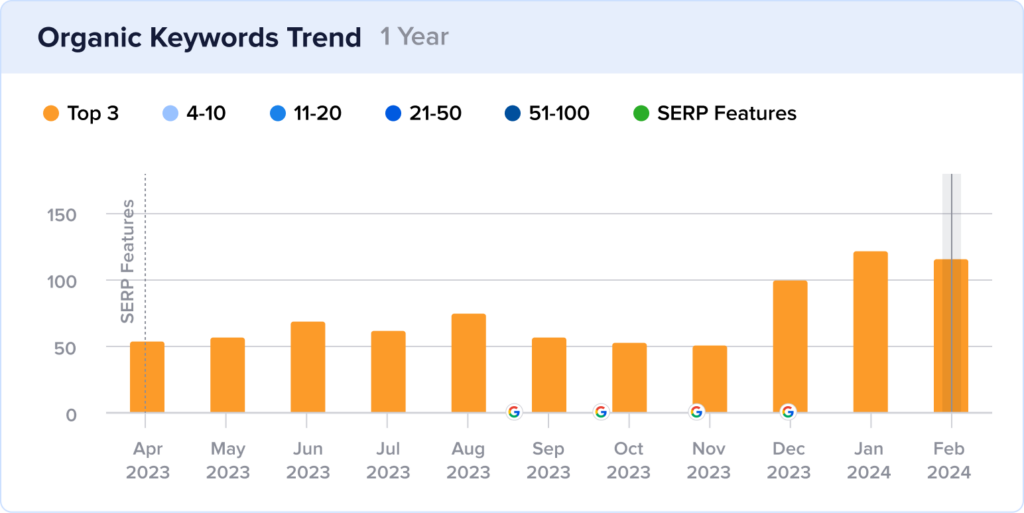
Featured snippets appear above organic results and under ads or sponsored posts (when present). This position is often referred to as position zero among SEOs.
Here’s an example of one:

Look at how much space that takes up on the SERP!
Featured snippets are one of the most prominent search results, making them highly covetable.
They allow users to find quick answers by providing relevant information to the original search query.
As for getting them, we noticed that only one page was ranking for all of Frameology's featured snippets. This page is a blog titled “The Ultimate Guide to Standard Frame Sizes.”
And on this page, the content structure stood out to us. Frameology uses questions and keywords in its subheadings, which we can see below.
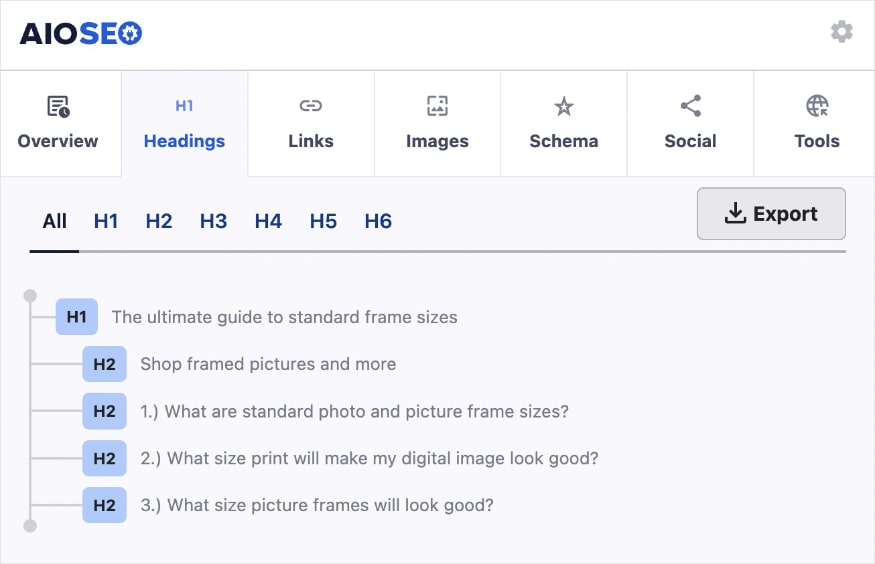
Note: The above screenshot was taken from the All in One SEO Analyzer. This free Chrome Extension makes it easy to analyze your website and those of competitors.
Question-based subheadings are a great way to optimize your content for featured snippets. (They can also help you win People Also Ask (PAA) results, another type of rich snippet.)
Another trick that Frameology uses is to answer the question directly below the subheading. They also use clear, concise copy (and, in this case, a bullet point list) to make it easy for search engines to generate a featured snippet.
Take a look at how the screenshot of the blog’s copy below matches the earlier image of the featured snippet. They’re practically an exact match.

Why this matters:
Featured snippets have the highest CTR for a single search result at 42.9%. They’re also impossible for users to miss considering their size and positioning on the SERP.
Ultimately, they can be a powerful driver of organic traffic and, like review snippets, boost your brand awareness.
Finally, it’s important to note that Google generates featured snippets on a per-search basis. This means you can’t force search engines to display a featured snippet.
There are, however, best practices for getting them. Let’s look at those next.
How to optimize your content for featured snippets:
As we saw with Frameology, using question-based subheadings and clear, direct copy is a winning combo for getting these coveted search results.
You should also do the following:
- Implement schema markup (FAQ, Recipe, HowTo, Product).
- Add a table of contents.
- Use short paragraphs and break up tutorials into steps.
- Write a killer piece of content. (This is a must to win featured snippets.)
- Check out what pieces the competition is ranking for with featured snippets.
For help with any of the above steps, check out this beginner’s guide to getting featured snippets.
Tools for featured snippets:
With AIOSEO, you’ll get a suite of tools that can help you win these covetable search results. One of our favorites for featured snippets are the FAQ blocks.
This user-friendly block allows you to add questions and answers easily in WordPress. And the best part is that it implements FAQ schema automatically for you.
All you have to do is locate the FAQ block in the WordPress editor and add it to your post or page.

You’ll get a prompt to write your question and answer, and then AIOSEO will format and apply the FAQ schema for you.
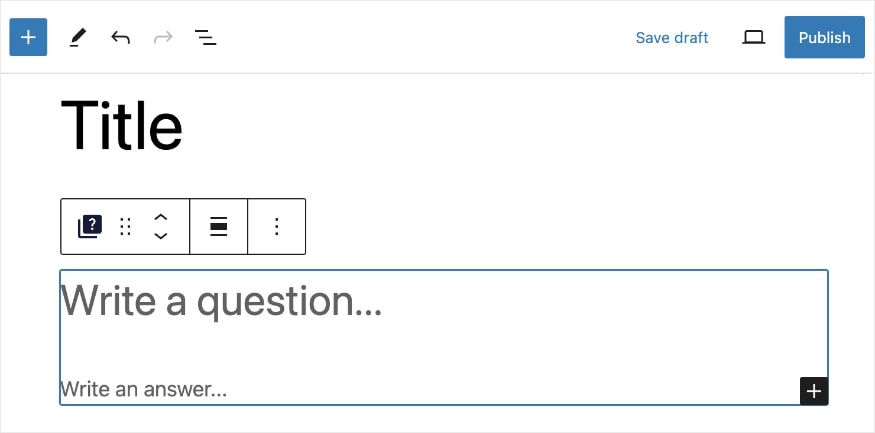
Next, let’s look at how backlinks are driving Frameology’s recent growth.
3. Doubling Down on Backlinks
In February 2024, backlinks more than doubled over the previous year.
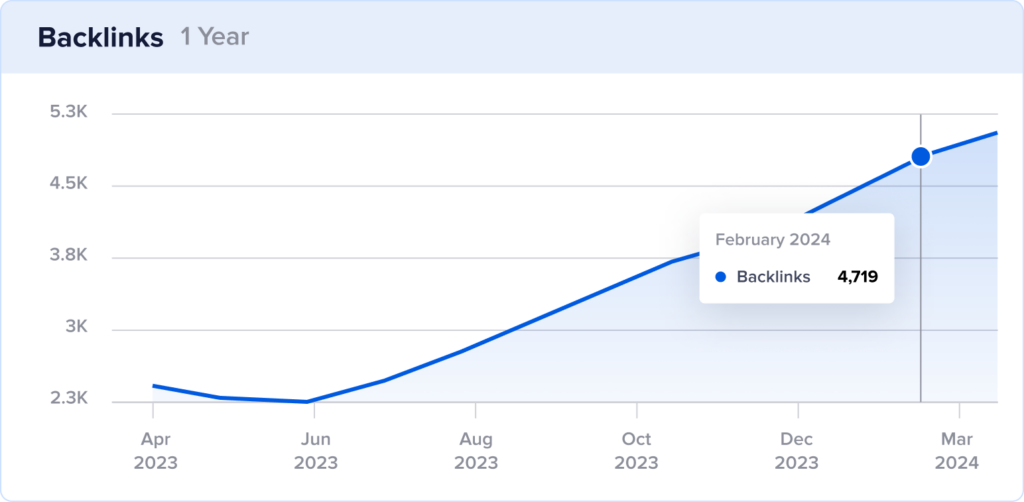
Backlinks are links from other websites to yours. They act like votes of confidence, telling search engines and users that they find your content valuable and trustworthy.
Backlinks can be broken down into two categories: dofollow and nofollow
Dofollow, or follow links, are links that pass SEO equity. They tell search engines to follow the link and share SEO value with the linked site.
Nofollow links do the opposite. They don’t tell search engines to crawl it and don’t pass on any SEO value.
In general, follow links are more valuable than nofollow links. And in Frameology’s case, they have a higher share of follow links.
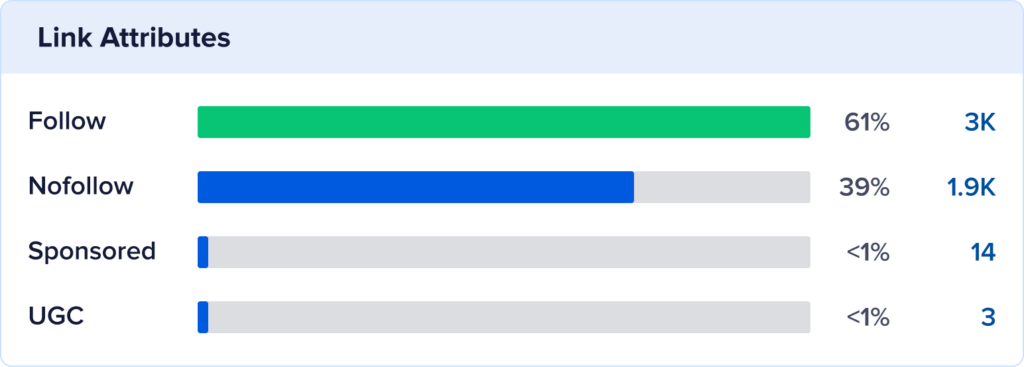
It’s also important to know that quality matters for backlinks.
The goal is to get backlinks from relevant, credible sources. Natural anchor text is also helpful. And if it’s a follow link, even better.
Overall, Frameology appears to have some natural backlinks from reputable sources in the interior design industry.
Why this matters:
Backlinks are among the top three ranking factors in 2024. And they show no signs of slowing down in subsequent years.
A link-building strategy is critical to ensuring your site ranks and builds authority of its own. Our next section will show you how to create one.
How to create a link-building strategy:
Backlinks are just one component of a holistic linking strategy. This article shows you how to get backlinks, but it's also essential to optimize for the following:
- Internal links (from one page on your site to another page on your site)
- Outbound links (from your site to another external site)
This link-building guide has all the steps you need to optimize for each.
Tools for link building:
Link building can be manually intensive and require significant time.
Streamline your link-building efforts with Link Assistant, the fastest way to find internal linking opportunities.
With linking suggestions that populate in the WordPress editor, it’s as quick as clicking Add Link.
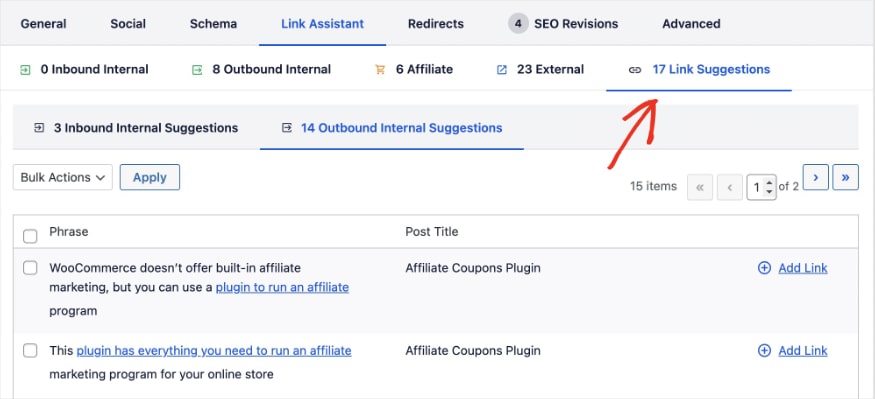
Before we wrap up, there's one more factor that has played a significant role in Frameology's traffic growth.
Interestingly, Frameology hasn't fully optimized for this element, but we'll show you how you can leverage it for your own success.
4. Rise to the Top With Image Rich Results
Frameology experienced a significant increase in rich results with images in 2024.
And what’s even more impressive is that 23.6% of these results were in the top 3 positions.
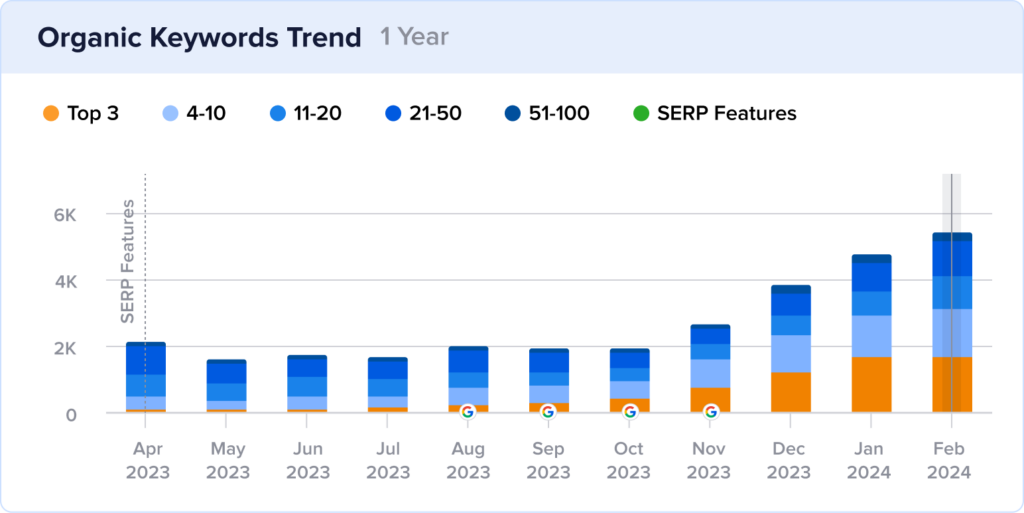
It’s pretty normal for websites using product schema to win this type of search result. In the image below, we see a product snippet with an image.
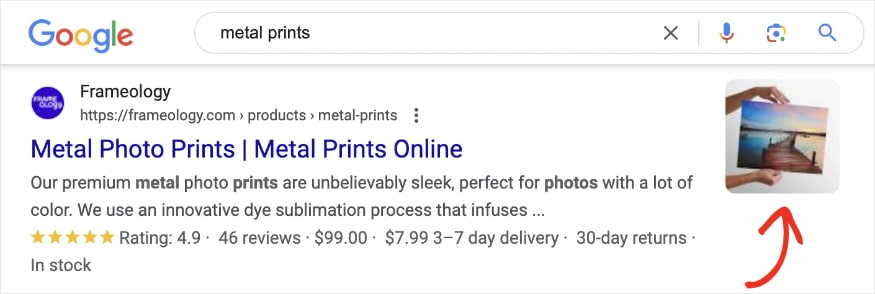
However, Frameology isn’t necessarily actively optimizing for images.
In fact, they don’t even assign an image in their product schema markup. (Typically, you select or upload an image with product schema.)
They also don’t optimize the image file names or write alt text, key components of image SEO.
Despite these oversights, Frameology continues to experience growth with its images. How much further could they go if they did implement effective image SEO practices?
Why this matters:
Visuals are an excellent way of capturing users' interest in your content and on the SERP.
Proper image SEO ensures your images are user-friendly and easily understood by search engines. This can ultimately help them appear in search results.
Besides traditional search, you can also rank in Google Images, where there are over 1 billion searches per day.
How to do image SEO:
In addition to the steps we mentioned above, here are some additional image SEO best practices:
- Use image title tags.
- Write captions when helpful.
- Compress images to reduce their file size.
- Create an image sitemap.
For even more tips, visit this WordPress guide on optimizing images.
Tools for image SEO:
Image SEO can be time-consuming without the right tools.
At AIOSEO, our Image SEO feature minimizes the manual work of image optimizations. You can use smart tags on alt text and title tags to automate optimizations, making image SEO a breeze.
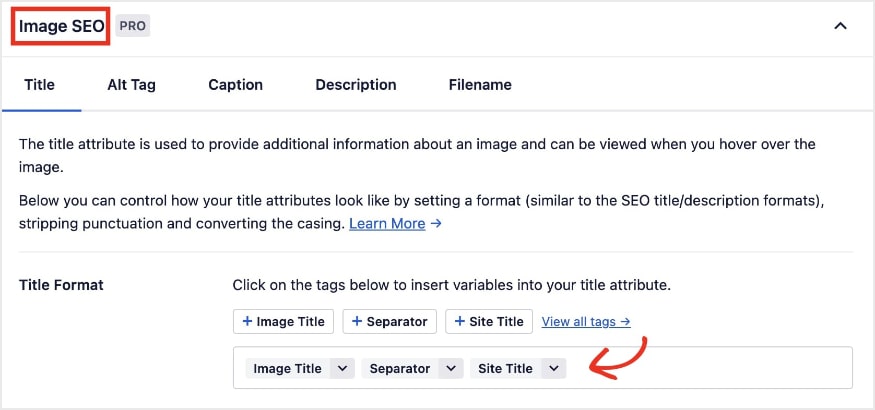
And if you’re using product schema, like Frameology, you can easily upload your images, and we’ll format the structured data.

Standout SEO Wins
We also have one closing strategy for website owners to take from Frameology.
They have an HTML sitemap landing page.
An HTML sitemap is a clickable list of all the pages on your website. It organizes content for users to aid in site navigation.
Here’s an example of one section of Frameology’s sitemap (Products). They have additional categories like Collections and Blogs.
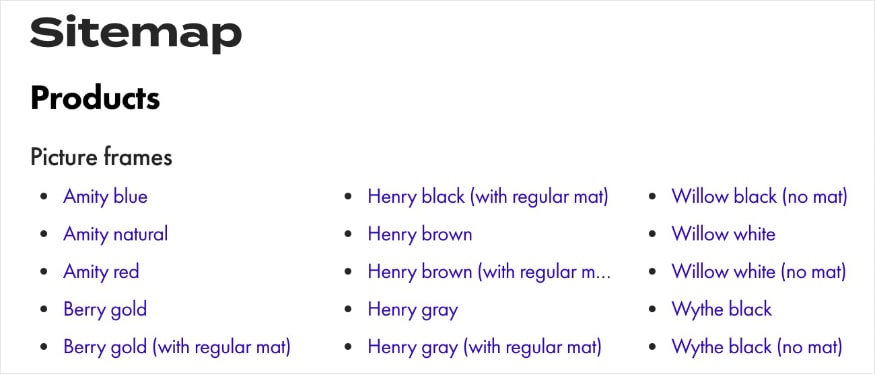
HTML sitemaps can help users uncover new corners of your site and boost content discovery. It also supports your internal linking strategy because you hyperlink each page.
Tool: You can create and display an HTML sitemap on your WordPress site with AIOSEO. Here’s a beginner-friendly tutorial on how to do HTML sitemaps on WordPress.
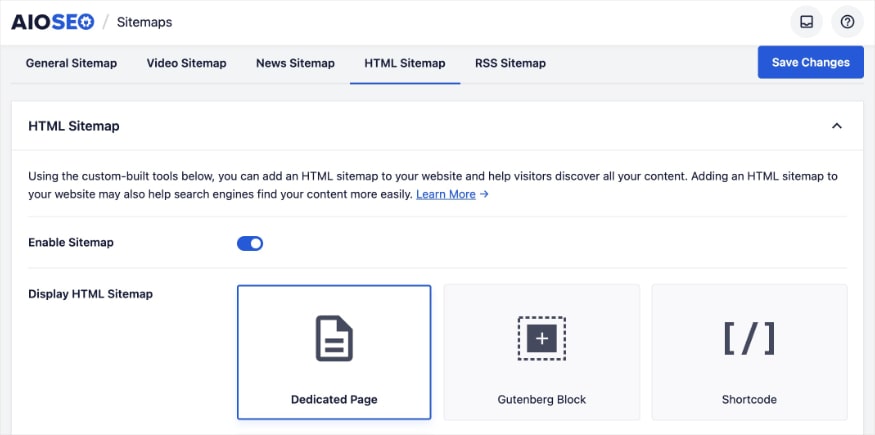
Note: HTML sitemaps are not the same as XML sitemaps. HTML sitemaps help people navigate websites, while XML sitemaps help search engines crawl and index a site's web pages. Both types are valuable and can be easily implemented with AIOSEO.
Takeaways
In our analysis of frameology.com, we’ve discovered how a few key strategies transformed their presence on the SERP.
Now, let’s recap which tactics to use on your website and others to reconsider.
Top 3 Strategies to Emulate
- Use product schema and image SEO to create attractive rich results on the SERP. Product schema and optimized images can significantly enhance the appearance of your website in search results. These elements create eye-catching rich results that boost clickthrough rates and drive traffic to your site.
- Optimize your content for trustworthy featured snippets. Featured snippets are highly valuable as they provide users with direct answers to their queries at the top of the SERP. By optimizing your content to address specific user queries and providing clear and concise information, you increase the chances of winning these covetable search results. Featured snippets can increase your visibility, establish niche authority, and grow organic traffic.
- Nurture your backlink profile with high-quality backlinks from credible sources. As one of the top ranking factors, backlinks are an integral component of every effective SEO strategy. Aim for quality over quantity, and look for backlinks from credible, relevant sources. Also, by creating valuable content, you'll improve the chances of winning backlinks organically.
Bottom 3 Strategies to Reconsider
- Setting noindex tags on pages that could use indexing. Some of Frameology's collection pages have a noindex directive. Using noindex tags prevents those pages from appearing in search results. This can ultimately hinder your website's visibility. It's important to carefully evaluate your website's pages and double-check your noindex directives. There is a time and place for them. AIOSEO’s Robots Editor allows you to set noindex directives easily when the situation calls for it.
- Duplicating meta descriptions across multiple pages. Duplicating meta descriptions across multiple pages can be detrimental to your website's SEO. Each indexable page on your website should have a unique and relevant meta description. When you duplicate them across several pages, search engines may struggle to differentiate between your content. In extreme cases, this can lead to duplicate content issues. We recommend using an AI meta description generator to write them for you.
- Exceeding metadata character limits. Exceeding character limits can cause search engines to truncate your meta titles and descriptions. This leads to incomplete or unclear information in search results. To ensure optimal readability, it's important to adhere to metadata character limits. You can use a SERP snippet tool to see how your page will appear in search results before publishing.
Steal Our Winning SEO Strategy: A Checklist for Your Website
Download A Free SEO Checklist
Access our comprehensive SEO Checklist with a single click. We'll deliver it straight to you, putting actionable items with SEO tools and tutorials right at your fingertips.
Enter your name and email to download a free SEO checklist.
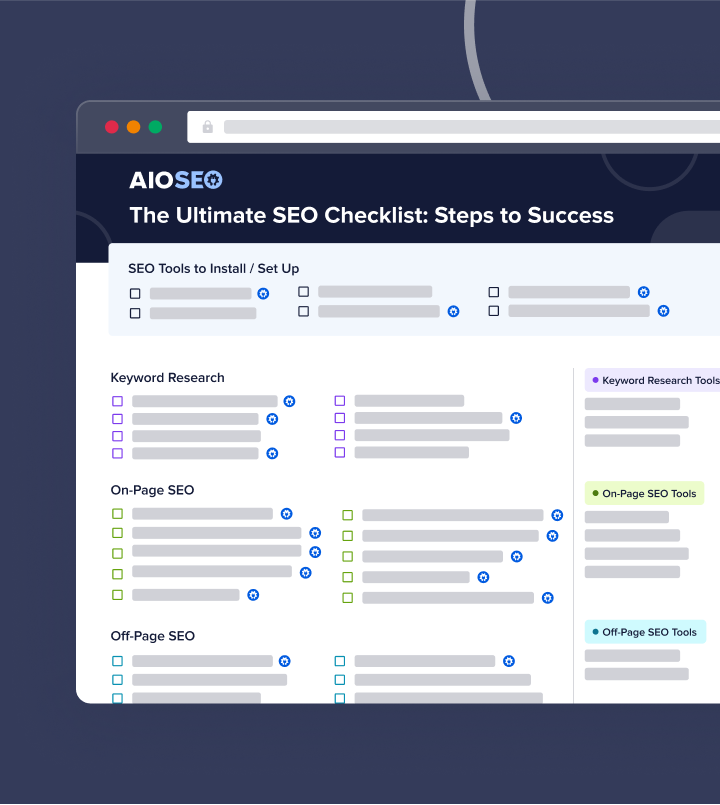
Transform Your SERP Presence and Win More Clicks With AIOSEO
Say goodbye to the heavy burden of managing multiple SEO tasks and let AIOSEO lighten the load.
From optimizing your content to generating sitemaps, AIOSEO is your one-stop solution for all your SEO needs.
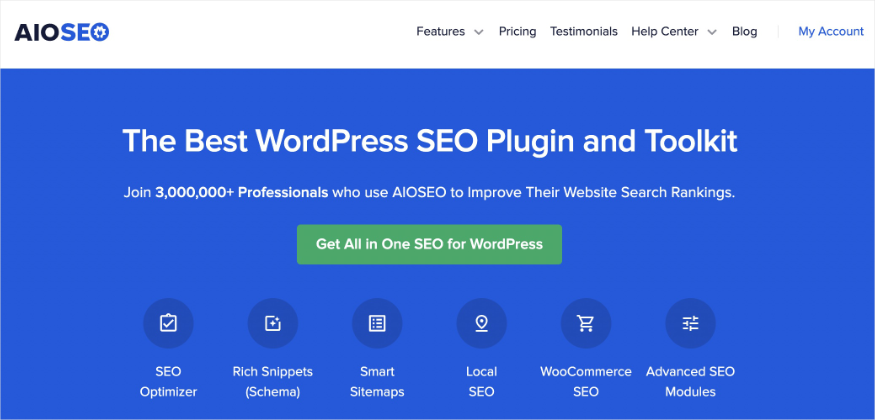
With thousands of 5-star reviews and trusted by over 3 million website owners, you’ll get all the tools to put your site at the top of the SERP. Plus, they’re beginner-friendly and don’t require a background in marketing, web development, or SEO.
SEO doesn’t have to be hard, and with AIOSEO, it isn’t.
Here are some features you’re going to love:
- Rich Snippets Schema: AIOSEO offers various schema types to help you claim more real estate on the SERP with rich results. It’s as simple as choosing the schema you want; then, we’ll take care of the rest.
- FAQ Blocks: Add FAQs to your content to increase the likelihood of appearing in Google’s People Also Ask box. These results help boost brand awareness and increase clickthrough rates.
- Link Assistant: Get link suggestions, edit anchor text, and add internal links to your content in just 1 click. Link Assistant helps you effortlessly build a better linking strategy.
- Image SEO: Turn on automatic image alt text and title attributes with a single click. You’ll save time from manual entries while helping users and search engines understand your images.
- Smart Sitemaps: Easily generate HTML, XML, and RSS sitemaps with the help of AIOSEO. These dynamic sitemaps ensure all your content is crawled and indexed efficiently for faster rankings.
- Robots.txt Editor: Control how bots crawl your site with the Robots.txt Editor, which allows you to override default WordPress settings. This tool makes it simple to view your robots.txt file and manage rules.

